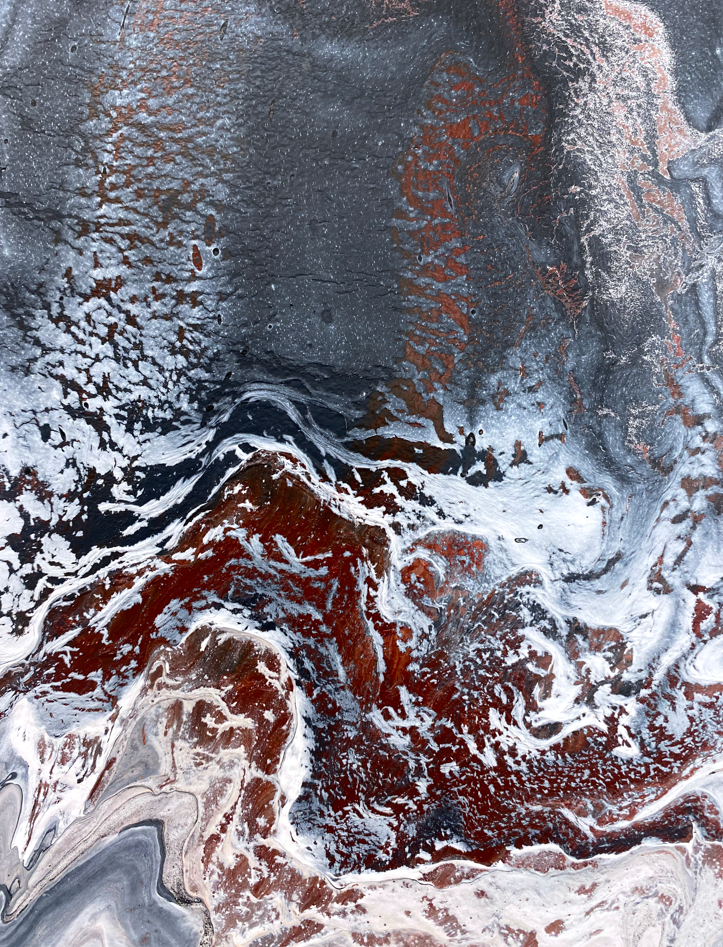The artist who dances with painting
Silvère Jarrosson, born in 1993 in Paris, creates a dialogue between dance and painting in a language where movement becomes material. A former student of the Paris National Opera dance school, he swapped the stage for the canvas in 2013, translating the energy of choreographic gesture into vibrant compositions, between abstraction and organic evocation.
He uses dripping, a technique where the paint is freely placed on the canvas before being guided by the artist’s movements. This approach, close to action painting, places the body at the heart of the creative process. His practice demands control, patience, and precision—qualities that echo his past as a dancer.
Winner of the Claude Monet Foundation prize in 2018, he affirmed his style during an exhibition in Riga before continuing his exploration between the Villa Médicis and the Lambert collection. His works, inhabited by the rhythm and instinct of the moving body, entered the collections of the Mobilier National and Société Générale.
In 2021, he took over the Saint-Louis chapel at La Salpêtrière before designing the scenography for the program Danser Schubert au XXIe siècle for the National Opera of the Rhine. His dialogue with Olivier Debré in galleries highlights a lineage with gestural abstraction, tinged with a scientific approach to movement. In 2023, the Unterlinden Museum dedicated an exhibition to him where painting and dance merge in the same breath.
What connects us:
At Davidson, we are sensitive to movement and the balance between humans and their environment. Silvère Jarrosson’s painting moves us by the way it captures the energy of gesture and the spontaneity of the living.
His approach resonates with our way of working: adapting, finding the right balance, and navigating between mastery and freedom. Like his work with movement and material, we seek to move forward flexibly while staying true to our commitments.
Walks in the forest, the movement of nature, the strength of the living: so many elements that speak to us and that we find in his work. His hikes in the mountains, where he soaks up the power of nature and matter, echo his vision of art, where every element finds its place in an organic dialogue.
Finally, the organic aspect of his canvases, evoking the living and natural elements, reflects his perspective as a biologist. Through his works, he weaves a connection between matter, body, and nature—a perspective that resonates with our vision at Davidson.

